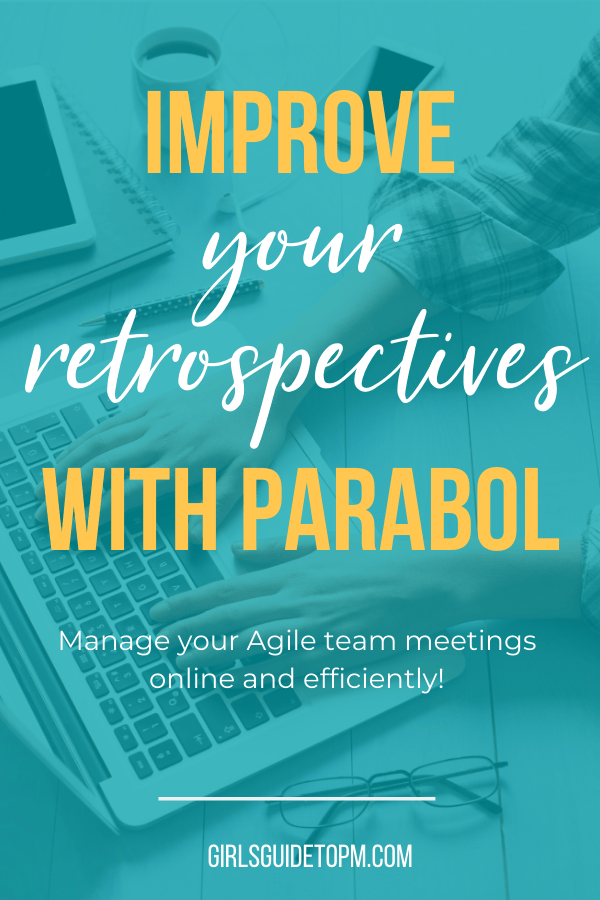Parabol: Improve your retrospectives
Are you looking for a tool to run retrospective meetings? In this Parabol review, I’ll share the pros and cons of the popular tool – it could be the right product for your
Summary
Product: Parabol
Cost and plans: Free plan for up to 2 teams
Hosting model: Cloud and on-premise
Languages: The interface is English although you can use any input language
Website: https://www.parabol.co/
What is Parabol?
Parabol is a free online retrospective meeting tool.
If you work in
How to host a retrospective
As a host, you can invite people to join your Parabol retrospective with a link. They can easily access their dashboard and they turn up in your meeting at the right time.
You can create templates for meetings so regular sessions are set up exactly as you would want them.
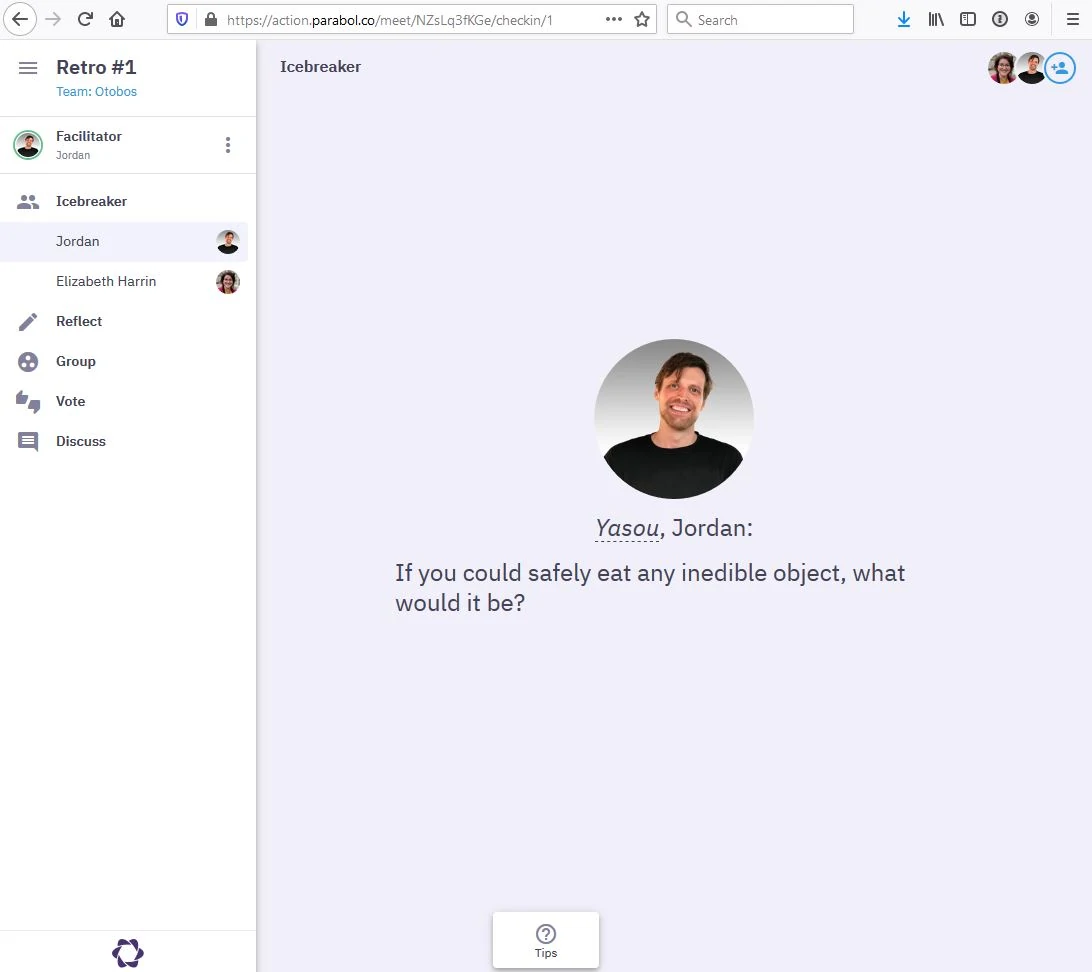
The first thing you see when you join the retrospective is one of over 200 icebreaker questions. As the host, you can choose what you ask so you’ll always be able to mix it up.
Run your icebreaker round (or disable it – you don’t have to do it) and then move on to the main part of the retrospective.
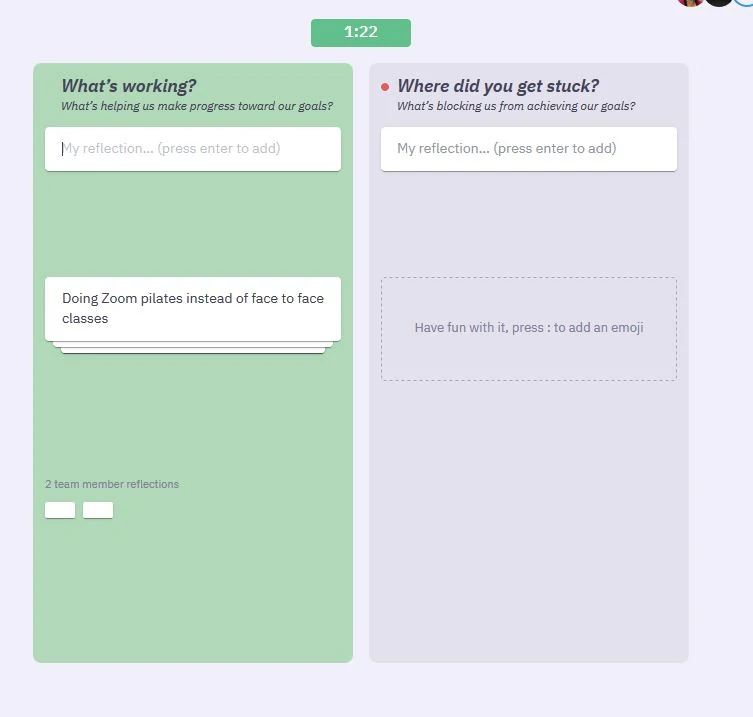
Reflection round
Set the timer for a reflection round. Your meeting attendees then note down their input to the retrospective. There’s space in Parabol to record what is working as well as where people got stuck.
Reflections are anonymous so you can address hard truths but also avoid anchoring to other ideas or topics at this point.
Grouping
Next, the team comes together to review the input and group ideas. The AI in Parabol automatically suggests headings for each of the groups based on the content of the cards, but you can edit those to be whatever you want.
You can keep ideating in the grouping section if you want to add anything else. Everyone can grab and move the cards so you can work collaboratively.
When the team is happy that the cards have been grouped, you can move on to voting.
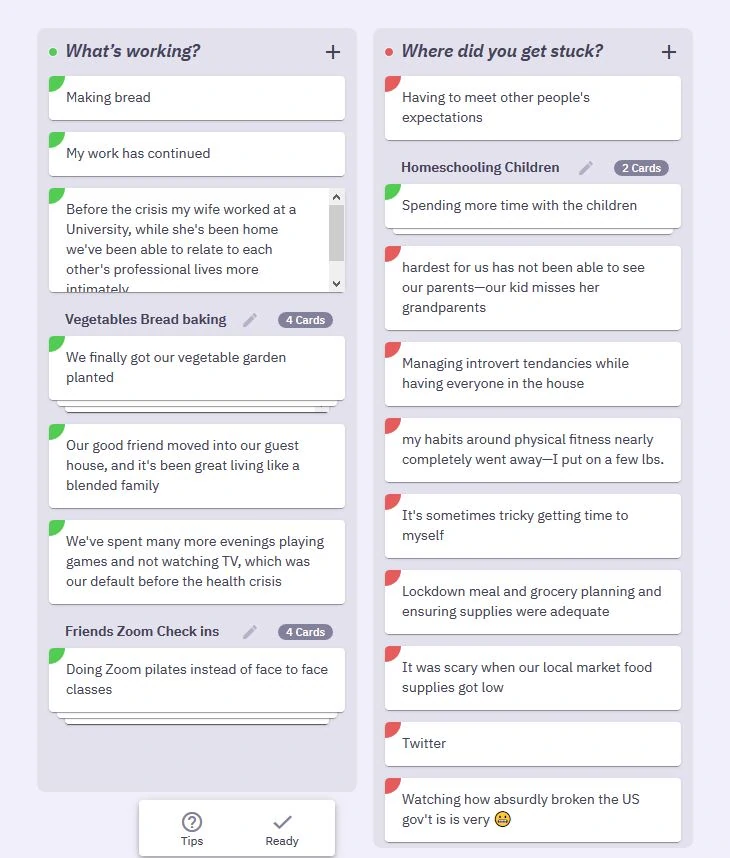
Voting
It’s really easy to vote for the topics that need more discussion time: click thumbs up or thumbs down.
Each team member get 5 votes by default but the facilitator can change that to whatever you think is appropriate. Each person can vote up to 3 times for one topic – again that’s a setting you can change if you want to give people more or fewer votes.
In the olden days (as my children would say) we used to do this with stickers on a flipchart – with the resulting jostling, disruption and noise in the meeting room that comes with the whole team trying to crowd around one piece of flipchart paper. The online way is faster and you are less likely to be influenced by what your colleagues are voting for so you get a more honest outcome.
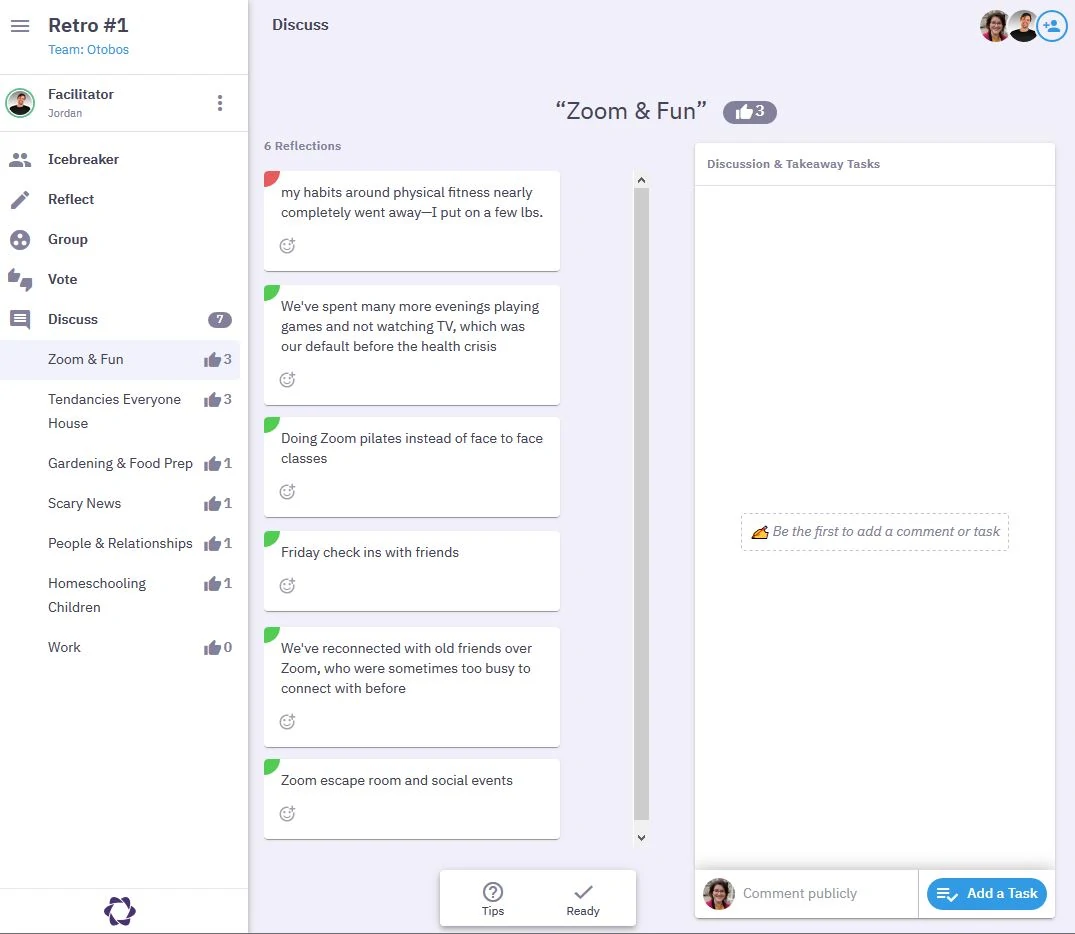
Next, the interface surfaces the reflections around the most voted for topics so you can hold your discussion on these points and turn the output into tasks.
When the meeting is finished, Parabol emails you a summary of the discussion – handy for people who can’t get away from using their inbox as a To Do list.
Integrations
Parabol interfaces with Jira so you can automatically add your tasks into your main collaboration tool if you are using Jira for task management.
There are also integrations with GitHub and Slack.
You can export the meeting data as a .csv so you can import it into other tools if you like.
Your Dashboard
After the meeting, your Parabol dashboard is updated with your tasks. It’s organized like a classic Kanban board with columns for future/backlog tasks, work that is stuck, active tasks and completed tasks.
There is also a personal timeline so you can find the meeting notes again if you need them.

Future Agendas
The best feature on the personal dashboard is the agenda space.
Yes, it’s good to know what tasks I’ve got to do, but I really want somewhere to record topics I want to discuss with the team but are OK to wait until our next call. You can write down the topics you want on the agenda – stuff you don’t want to forget but isn’t urgent enough to @mention anyone.
I can see why people start using the tool just for the retrospectives part, and then keep using it for meetings management.
Personalization and set up
Parabol is easy to use from the user’s perspective. You can change the colors of the retro columns and put on your own logo. The company is also open to relicensing and customizing and white label options if you wanted to go totally on-brand.
Parabol is open source so it’s constantly being improved.
Is Parabol free?
Parabol has a generous free plan for up to two teams. If you work in a small or medium organization with one or two teams, you’ll be able to use Parabol free.
If you have more than two teams, for example in an agency or consulting role, you’ll need to get a paid plan.
Parabol pricing is very competitive. At the time of writing it’s only $6 per active user per month. If someone doesn’t log in for the month, they are no longer considered an active user and you don’t pay for them.
Pros
The benefits of Parabol are:
- Can be used on premise (Parabol has military, finance and healthcare customers who are unable to use cloud tools)
- Parabol offers 5 retro templates—including my favorite, Start, Stop, Continue—and you can add your own templates, even in languages other than English.
- Easy-to-use interface – really easy, with low friction for all activities
- Generous free plan
- App-wide search
- Powerful and helpful agenda management to keep the team on track
- Can be used for asynchronous retrospectives
When I used it for a test meeting, we didn’t have a great internet connection but we could still have a meeting because the activities we are asked to do were clear. The tool steps you through all the topics and then provides your meeting summary.
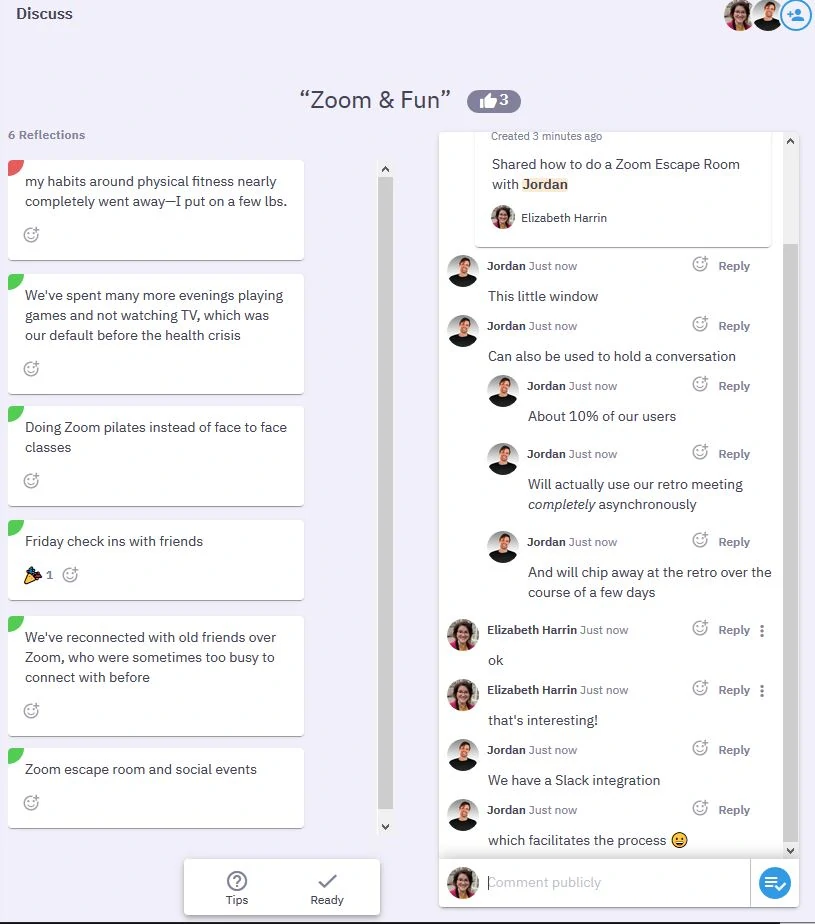
Cons
The drawbacks of the Parabol tool that I saw when reviewing are:
- Interface is only available in English – not so good for international teams
- Email summaries go to everyone invited by default, even if they don’t show up – more granularity (or a better prompt to edit the settings) might be good.
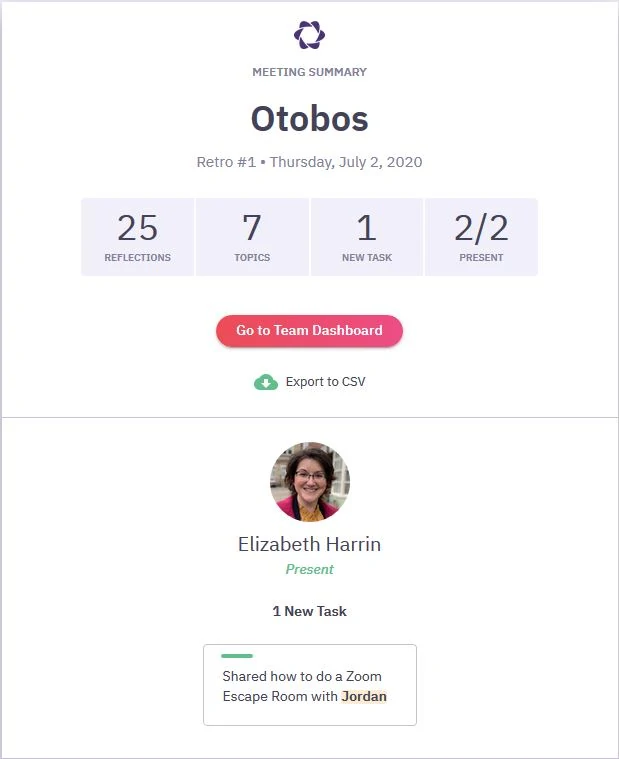
Sometimes, it might not be possible to go from bunch of cards straight to task, even with discussion. You might want to record a lot of potential tasks, prioritize them, review contributing factors or discuss with people outside the team before deciding on the exact activity to do. I know Scrum teams are multi-functional with a high degree of autonomy, but sometimes you do have to consult the organization’s lawyer or the PR team.
In that case, you’d be recording actions in Parabol to do that follow up work, instead of recording the exact decision made.
I spoke to Jordan Husney, Founder and CEO, who confirmed that Parabol will be adding more options for meetings including sprint planning.
Parabol Review: Summary
Parabol has fantastic reviews from users, and I can see why. It’s straightforward, effective, and I can imagine using it with a room full of execs who hate having to learn new tools – because honestly, you don’t have to learn it.
It’s intuitive and that’s what makes it effective and efficient. You’ll get more out of your meeting time by using Parabol, and that’s what really matters, isn’t it? Review, inspect, adapt and get on with creating great products for your customers.
Pin for later reading:
